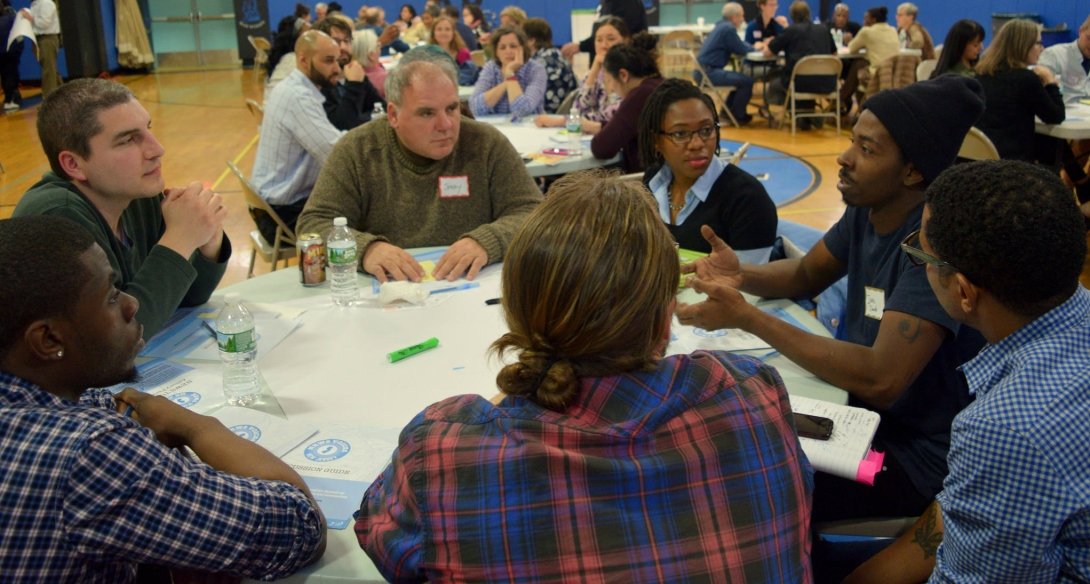How an Organizing Mindset Can Serve Newsrooms

Vanessa Maria Graber
This post originally appeared on the Geraldine R. Dodge Foundation blog.
Newsrooms are experimenting with different ways of engaging their audiences — and over the last few months Free Press has been on the ground figuring out the best ways to connect Garden State journalists and residents via our News Voices: New Jersey project.
We’re busy learning from community-engagement specialists, listening to community members, and drawing on organizing tools to discover what types of engagement work for newsrooms and benefit the public.
While the practice varies from newsroom to newsroom, engagement involves interacting with an audience to further a newsroom’s mission. It reflects the recognition that journalism is better when it engages communities through meaningful and thoughtful conversations, whether online or in real life. Some newsrooms are even creating new positions and adopting new tools dedicated to the practice.
Engagement can bridge the gap between journalists and audiences. It can also heighten community investment in local reporting.
Benefits of community engagement
Seeking and reporting the truth is essential to a journalist’s work. Community engagement is a powerful way to deepen a journalist’s ability to do so.
Here’s how community engagement can serve newsrooms:
- Listening to residents enables newsrooms to report on the issues that are most on people’s minds. That means stories draw greater interest and attention.
- An engaged audience is like an army of sources. Conversation with knowledgeable members of the community can help a reporter learn quickly, gather facts and get stories right.
- Engagement helps reporters be transparent about how they do their work and how they know what they know. This approach builds trust with audiences and makes readers more critical news consumers.
- When people feel journalists are listening to them and representing their perspectives, they’re more likely to become avid readers and listeners. They’re also more likely to share journalists’ work with others.
- With so many forces competing for people’s attention, engagement helps ensure that hard-hitting journalism has the impact it should.
- Engagement is an opportunity to convey the value of journalism to the community. When people see that value, they’re more likely to support journalism financially.
Deepening community investment
With News Voices, we’ve adapted strategies commonly used in organizing and brought them to the newsroom.
By “organizing,” we don’t mean “activism.” Here’s how reporters can adopt an organizing mindset to engage communities:
Start with the person: People can tell whether you care about them. Community members should be treated with dignity and respect, even if you remain skeptical about their stories or motives.
Residents’ interactions with reporters shape how willing they are to engage. If you approach people with a spirit of openness and engage in active listening, the community will be more likely to trust you.
Embrace the community: Some of the most meaningful engagement happens when journalists stop thinking of themselves as being apart from the community, and instead start seeing themselves as part of the community. Discussions then go from being transactional or one-sided to being emphatic and reciprocal. This is something that all reporters, even the ones without “engagement” in their titles, should recognize.
Shift into a “reporting with” approach: Journalists play invaluable roles when they provide information and hold the powerful accountable. But members of the media themselves have significant power, especially over the communities they report on. The mindset of reporting with rather than reporting for is an attempt to dismantle this power dynamic.
Adapted from theories in civic technology, it attempts to draw on residents’ knowledge and power, respond to community needs, and create stories that are useful to the audience.
Acknowledge the whole person: Residents are not simply sources of quotes: They have a range of concerns and intersecting perspectives.
Developing stronger relationships with everyday people allows reporters to tap into a community’s collective knowledge. This not only informs how a journalist approaches individual stories but also how the reporter covers the community as a whole.
Some of these points may seem intuitive. Some may seem foreign. But don’t let the term “organizing” turn you off. Organizers know how to mobilize communities to address long-standing problems and get people to take collective action.
As local newsrooms seek to build their relationships with the community, they need to look to other fields that have had success in forming those bonds.